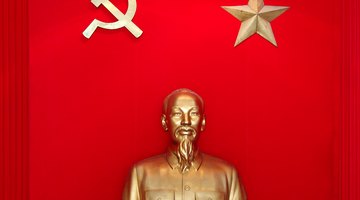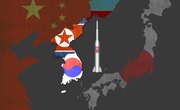Communism was a philosophy developed by Karl Marx in 1845, and while it almost took hold in France in 1871, it wasn't officially put into practice until 1917, when Russia adopted it as a form of government and became the first communist state. Between 1917 and 1991, when the Soviet Union collapsed, communism spread to countries across the world. Of these, China, Laos, Cuba, North Korea, and Vietnam still retain a communist form of government.
Paris Commune
In 1871, communism was almost established in France during the Paris Commune, a communist rebellion that lasted from March until May. The city council of Paris declared Paris independent from the French government and tried to govern the city on the basis of communism. The Commune quickly fell to French forces, and the first attempt at creating a communist state failed.
Soviet Union
After its communist revolution, Russia became known as the Soviet Union, which while technically a collective of nations adhering to a similar form of communism was really a way for the Russian communist party to extend its territorial control. The Soviet Union at its height consisted of Russia, Ukraine, Belarus, Moldova, Armenia, Azerbaijan, Georgia, Kazakhstan, Kyrgyzstan, Tajikistan, Turkmenistan, Uzbekistan, Estonia, Latvia, and Lithuania.
Eastern Europe
During the early stages of Cold War, communism quickly spread across Eastern Europe, usually through indirect Russian influence, and sometimes through a direct Russian invasion. Soviet supported communist parties took over in Poland in 1945, Albania and Bulgaria in 1946, Romania in 1947, Czechoslovakia in 1948, East Germany and Hungary in 1949. Though nominally independent, these countries were really satellites of the Soviet Union, and when any tried to break away from the policies of Russian communism they were invaded by the USSR, as happened in Hungary in 1956 and Czechoslovakia in 1968. Only Yugoslavia, another European communist country, remained independent in its policies, as its leader Josip Tito had the power and charisma to keep the country outside Soviet influence.
China and East Asia
Communist also spread to East Asia, largely through the influence of China, which became a communist country in 1949 under Mao Zedong. Communism spread to North Korea in 1948, which led to the Korean War between them and the U.S. supported South from 1950 to 1953, as well as to North Vietnam in 1945. After the U.S. failed to defeat the North Vietnamese during the Vietnam War, communism spread to neighboring Cambodia and Laos in 1975, while North Vietnam conquered the South and established a unified communist Veitnam in 1976. In East Asia Mongolia became communist in 1924 and maintained close ties to the Soviet Union.
Africa and Others
The Cold War also saw communism spread to Africa and other parts of the world. South Yemen became a communist state in 1967 after decolonization from the British, the only openly communist state in the Middle East. The Republic of Congo experienced similar turmoil after the French granted them independence in 1960, with a communist party emerging triumphant in 1970. Ethiopia became communist after a military coup in 1974 and support from the USSR, as did its rival Somalia in 1976. The former Portuguese colonies of Angola and Mozambique both experienced civil wars in 1975 when the Portuguese pulled out, and in both countries communists came to power. Finally, Cuba became communist in 1959 after a revolution led by Fidel Castro. Additionally, communist parties have had significant influence in the politics of numerous democratic states, often influencing policy in a socialist direction, as with France under President Francois Mitterrand.
Related Articles
References
Writer Bio
Aatif Rashid writes on international politics and culture. His articles have appeared in magazines such as "The Oxonian Globalist" and online at Future Foreign Policy and ThinkPolitic. He holds Bachelor's degrees in English and history from U.C. Berkeley and a Masters degree from the University of Oxford.











